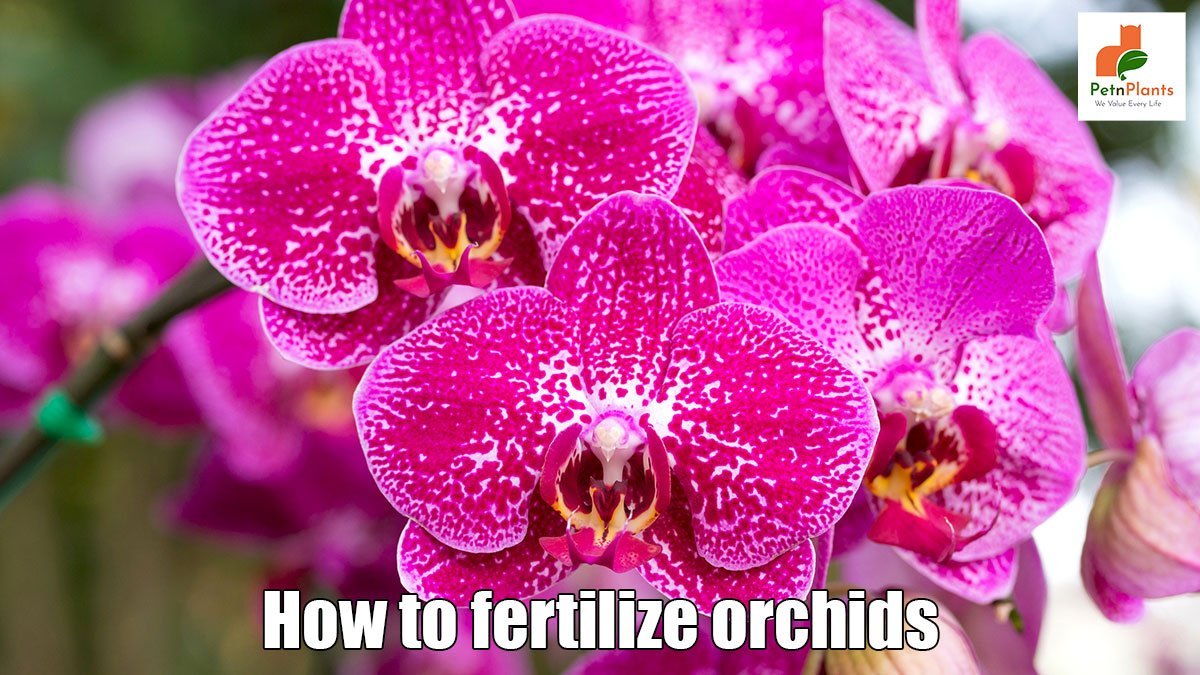How To
Latest
Pet Care
How to Groom Your Dog at Home with the Right Dog Grooming KitMarch 19, 2025
We Value Every Life

Orchids are beautiful, exotic plants that can add a touch of elegance to any home. Though they may seem delicate, with proper care, orchids can thrive for years. One important aspect of orchid care is fertilization. Fertilizing orchids is not difficult, but there are a few things to keep in mind to ensure that you are doing it correctly. In this blog post, we will go over the basics of how to fertilize orchids and give you some tips to make sure your plants stay healthy and beautiful.
Orchids come in a variety of colors, shapes, and sizes. There are over 25,000 species of orchids, and new ones are discovered every year. Orchids are categorized into two main groups: epiphytic and terrestrial.
Epiphytic orchids grow on trees, rocks, or other plants. They get their moisture and nutrients from the air and rain, and terrestrial orchids grow in the ground.
The most common type of orchid is the phalaenopsis, also known as the moth orchid. Phalaenopsis orchids are native to tropical Asia and can be found in various colors, including white, pink, purple, red, and yellow.
Cymbidium orchids are another popular type of orchid. They are native to China, Japan, India, and Southeast Asia. Cymbidiums can be found in various colors, including white, green, yellow, brown, and black.
Cattleya orchids are one of the largest types of orchids. They can be found in Central and South America and the West Indies. Cattleyas come in various colors, including white, pink, purple, red, yellow, orange, and green.
When it comes to fertilizing orchids, more is not always better. Orchids are sensitive to chemicals, and over-fertilizing can do more harm than good. Knowing what kind of fertilizer to use and how often to fertilize your orchid is important.
There are two main types of fertilizer: chemical and organic. Chemical fertilizers are generally quicker-acting but can be harsher on the plant, and organic fertilizers are slower-acting but are typically safer for the plant.
Most orchids will do best with a balanced fertilizer with equal nitrogen, phosphorus, and potassium (N-P-K). A good general rule of thumb is to fertilize your orchid every two weeks at ¼ to ½ the recommended strength on the fertilizer package. For example, if the package recommends mixing one teaspoon of fertilizer per gallon of water, you would mix ¼ teaspoon in a quart-size water container.
If you are unsure how often to fertilize or what type of fertilizer to use, it’s best to err on caution and fertilize less often rather than more. Over-fertilizing can lead to problems such as leaf burn, root damage, and stagnant growth.
If you want to have healthy and vibrant orchids, then you need to fertilize them regularly. But how do you fertilize orchids? It’s quite simple and only requires a few steps.
First, you need to choose the right fertilizer for your orchids. There are many different types of fertilizer out there, so it’s important that you select one that is specifically designed for orchids. This ensures that your plants get the nutrients they need without overloading.
Next, you’ll need to dilute the fertilizer before applying it to your plants. The general rule is to use half as much fertilizer as the package recommends, ensuring that your orchids don’t get too much of a good thing and end up damaged.
Once you’ve diluted the fertilizer, it’s time to apply it to your plants. The best way to do this is to use a watering can with a long spout to direct the flow of water (and fertilizer) onto the plant’s roots. Be sure to thoroughly soak the roots, but avoid getting any water on the leaves, as this can cause burns.
Finally, once you’ve applied the fertilizer, give your plants a good drink of water to absorb all those vital nutrients!
Orchids are a beautiful, exotic addition to any home or garden; with proper care, they can thrive for years. Fertilizing your orchids is an important part of their care routine, and there are a few things you should keep in mind to ensure you’re doing it correctly. With a little attention and the right fertilizer, your orchids will flourish and provide you with endless enjoyment.
0